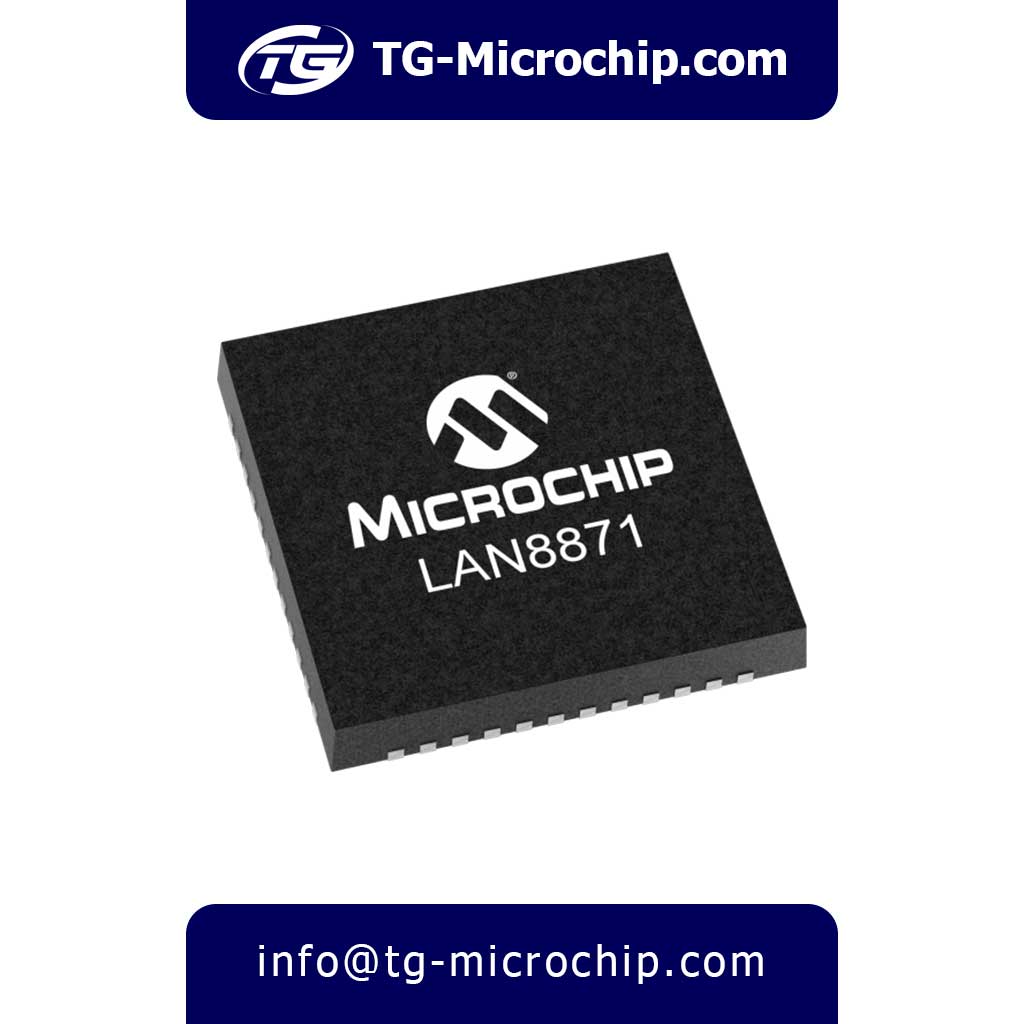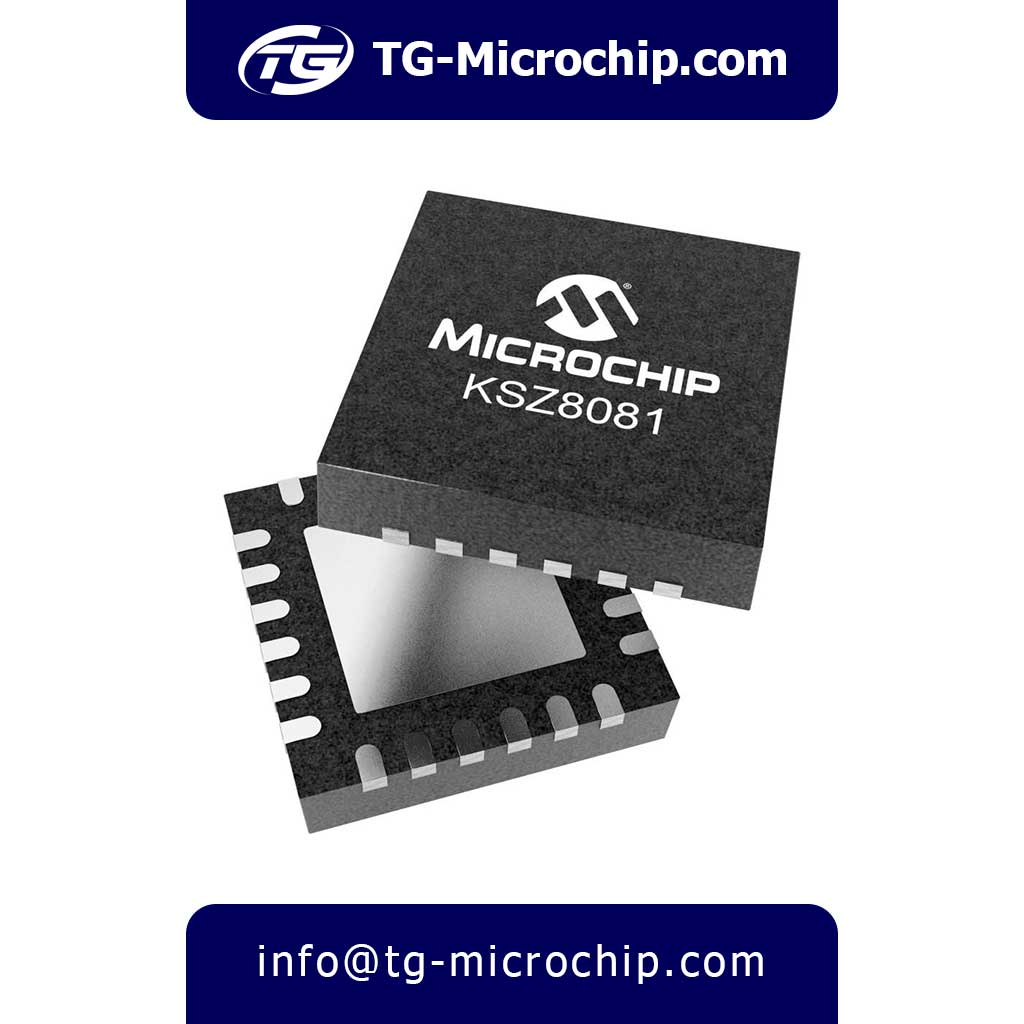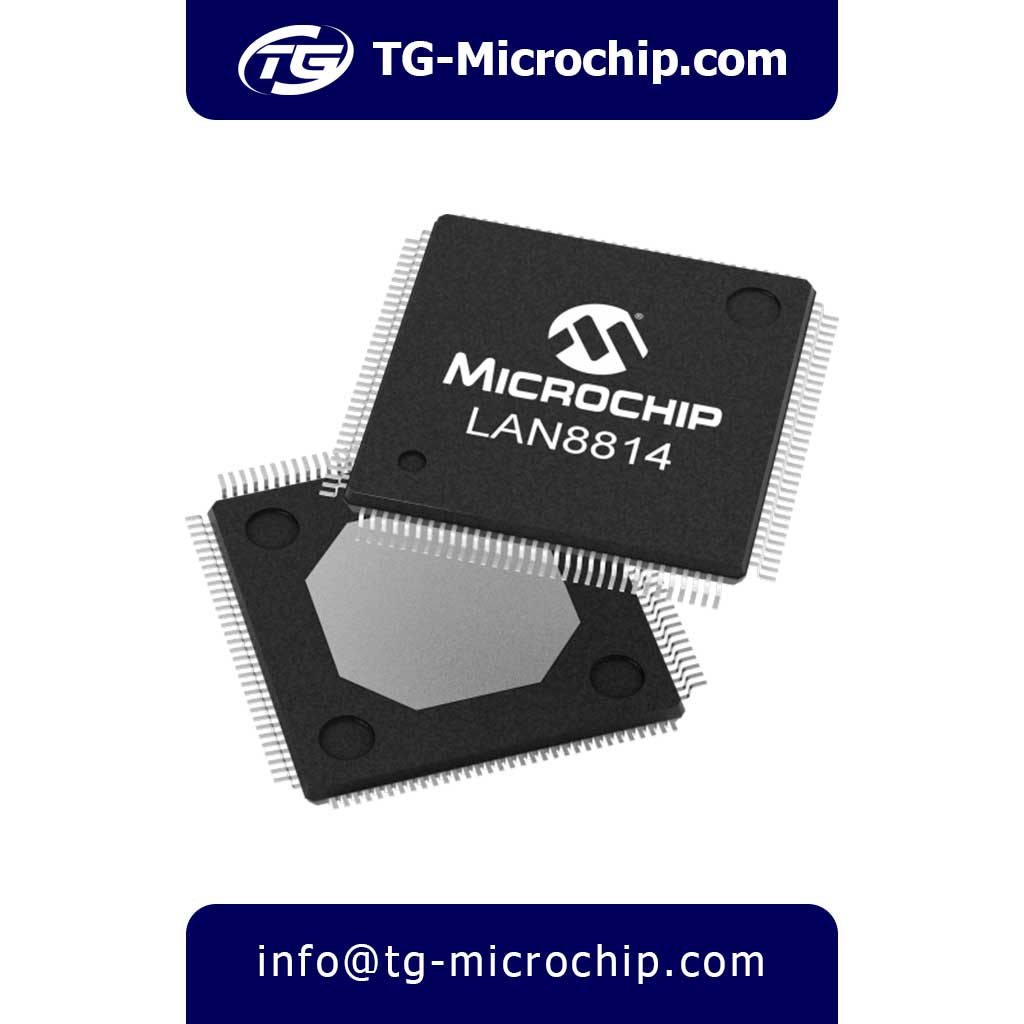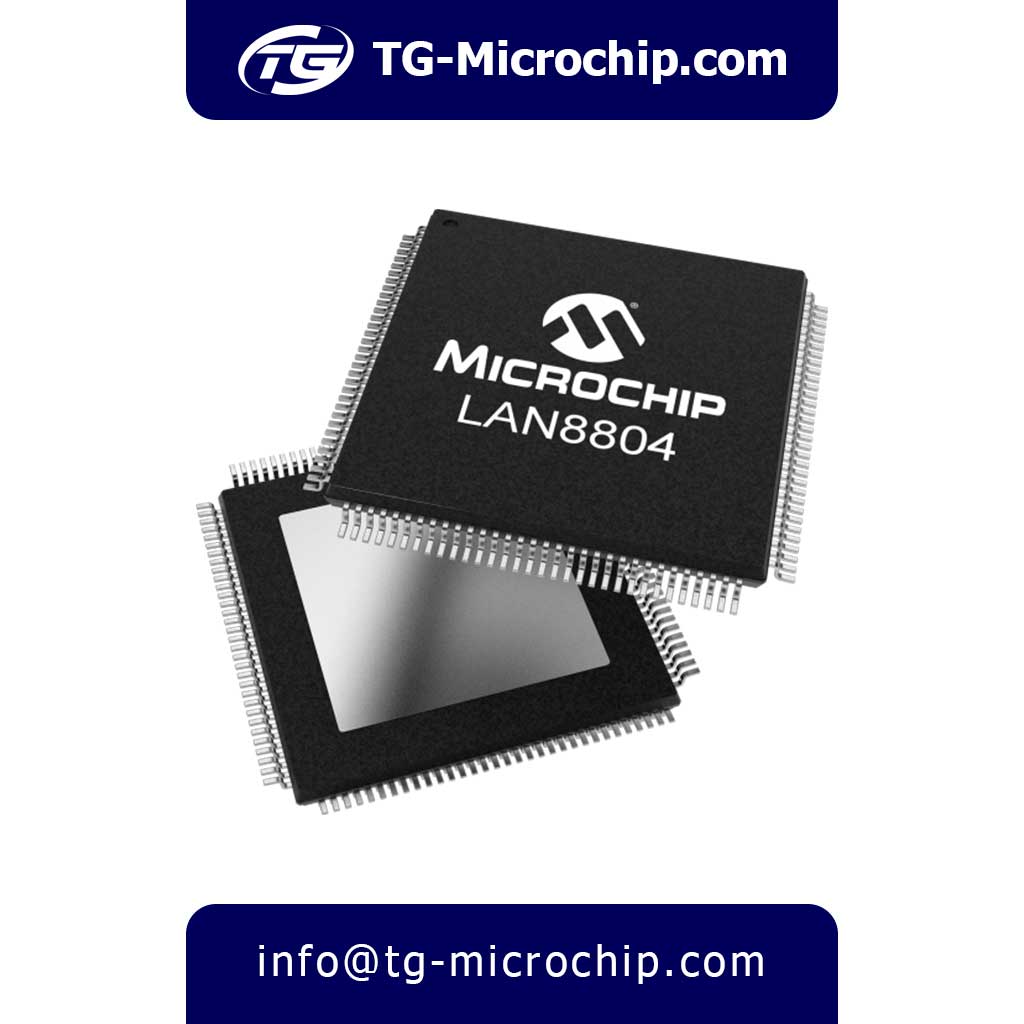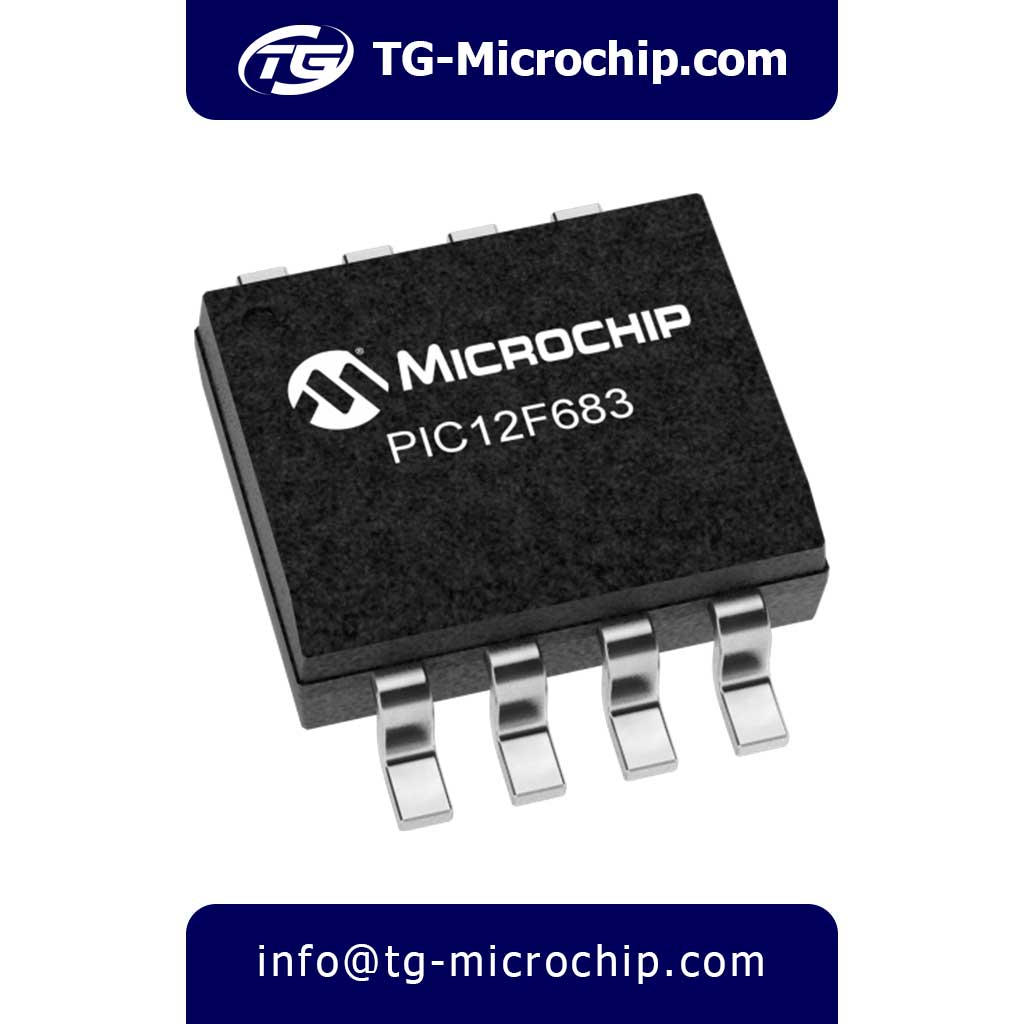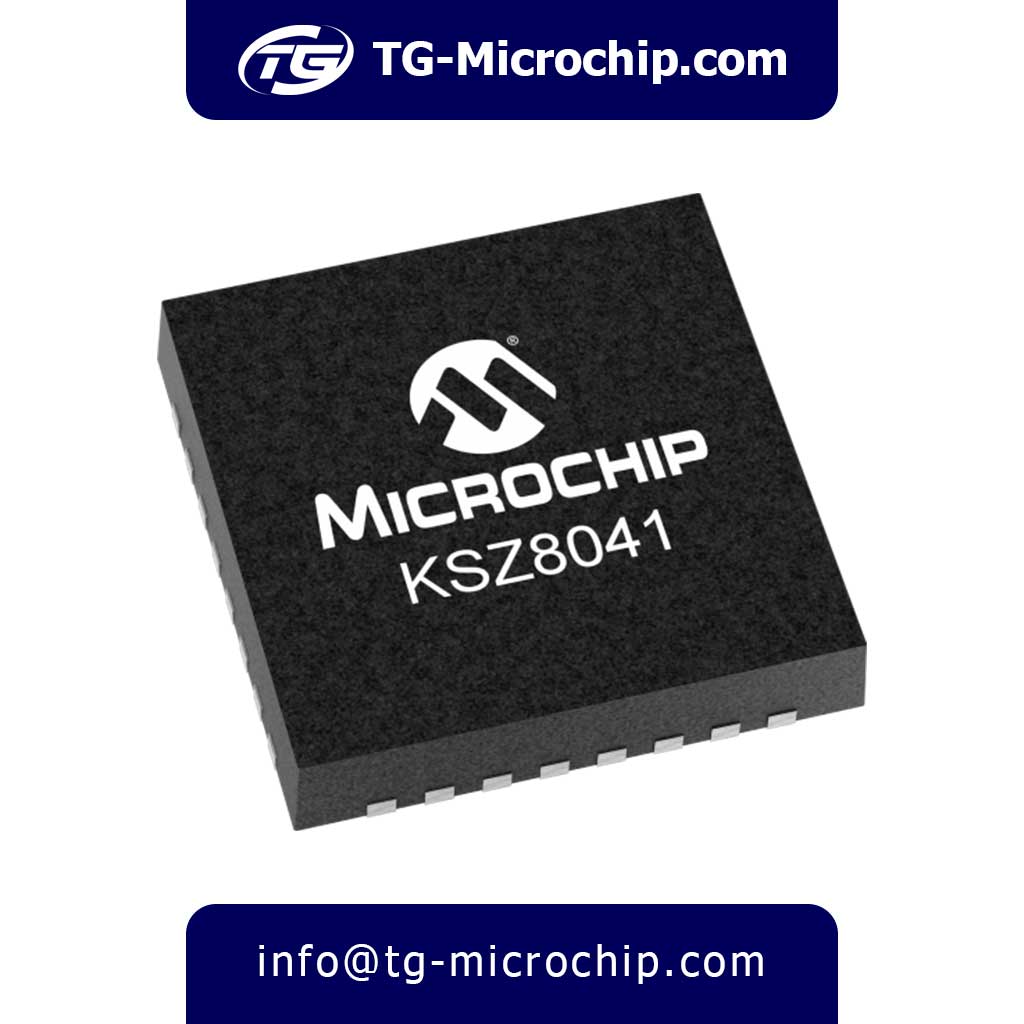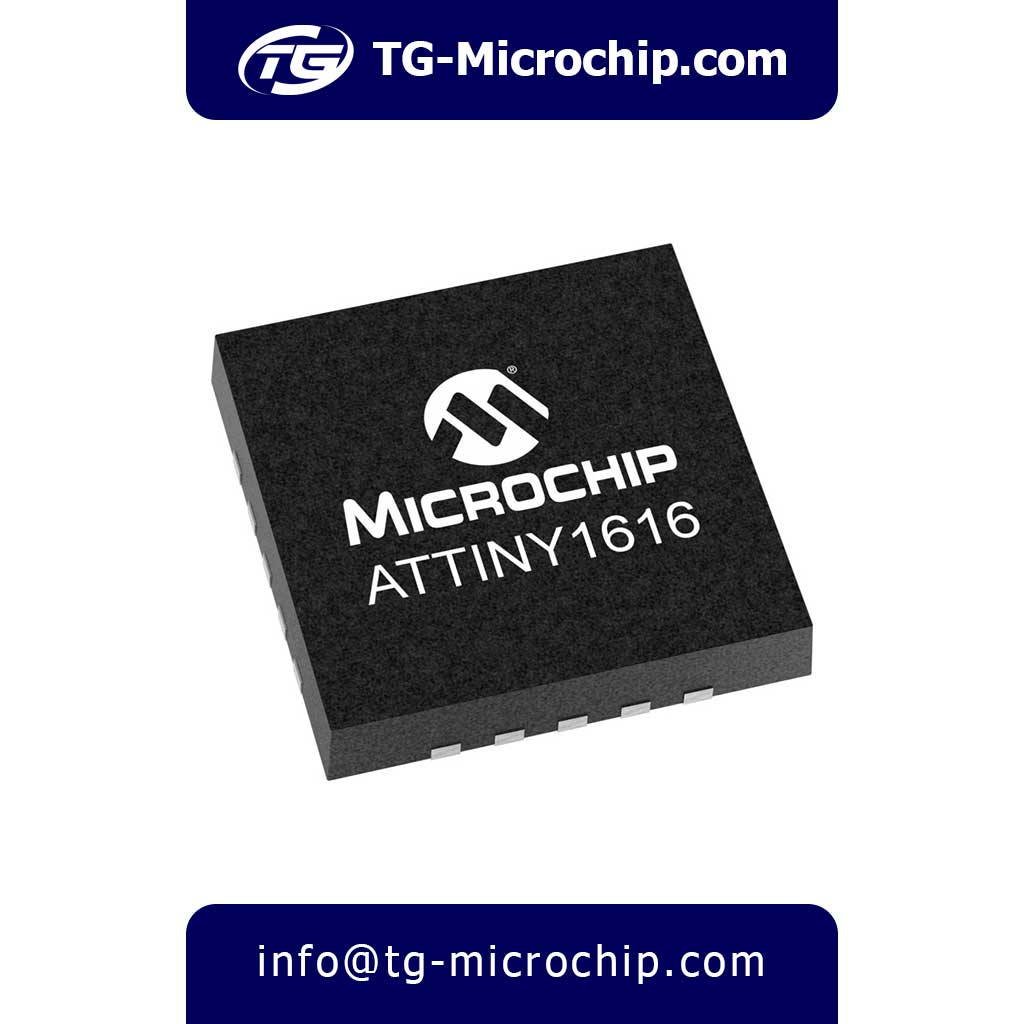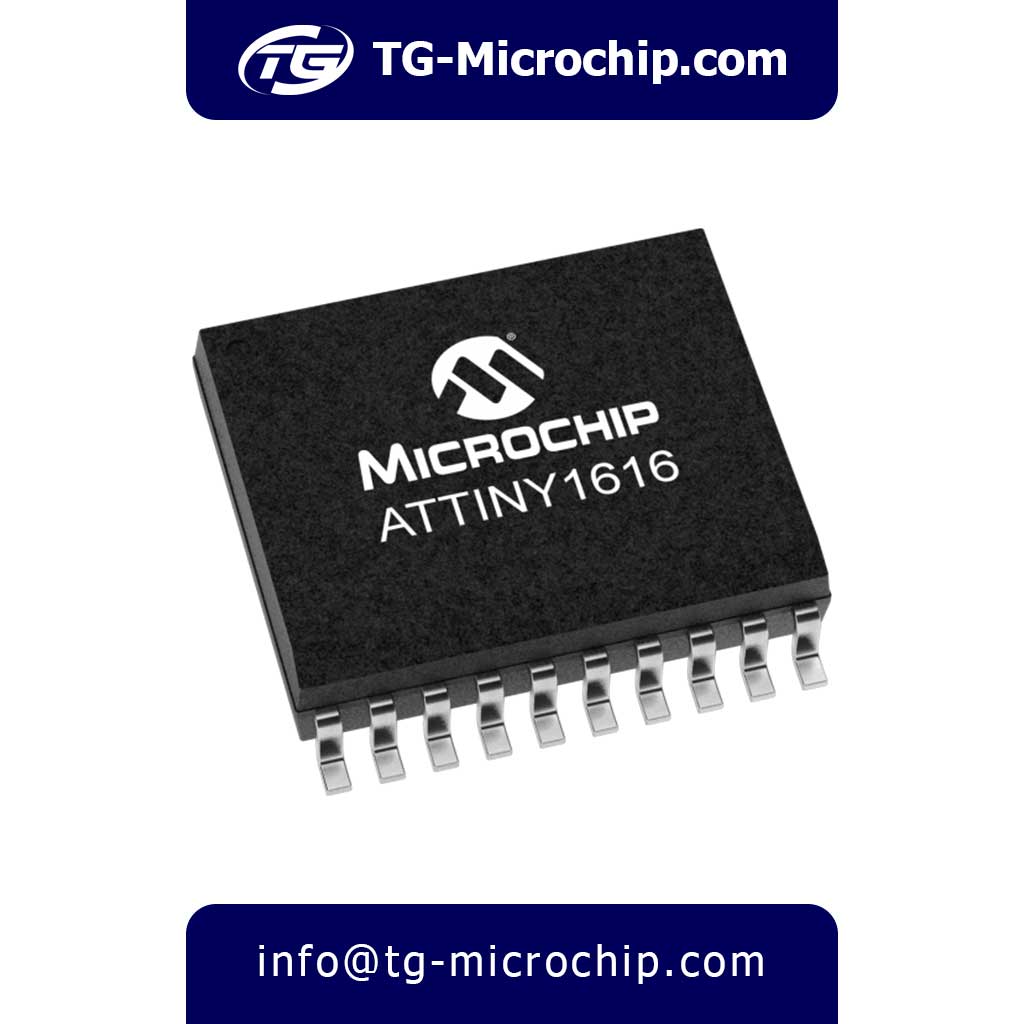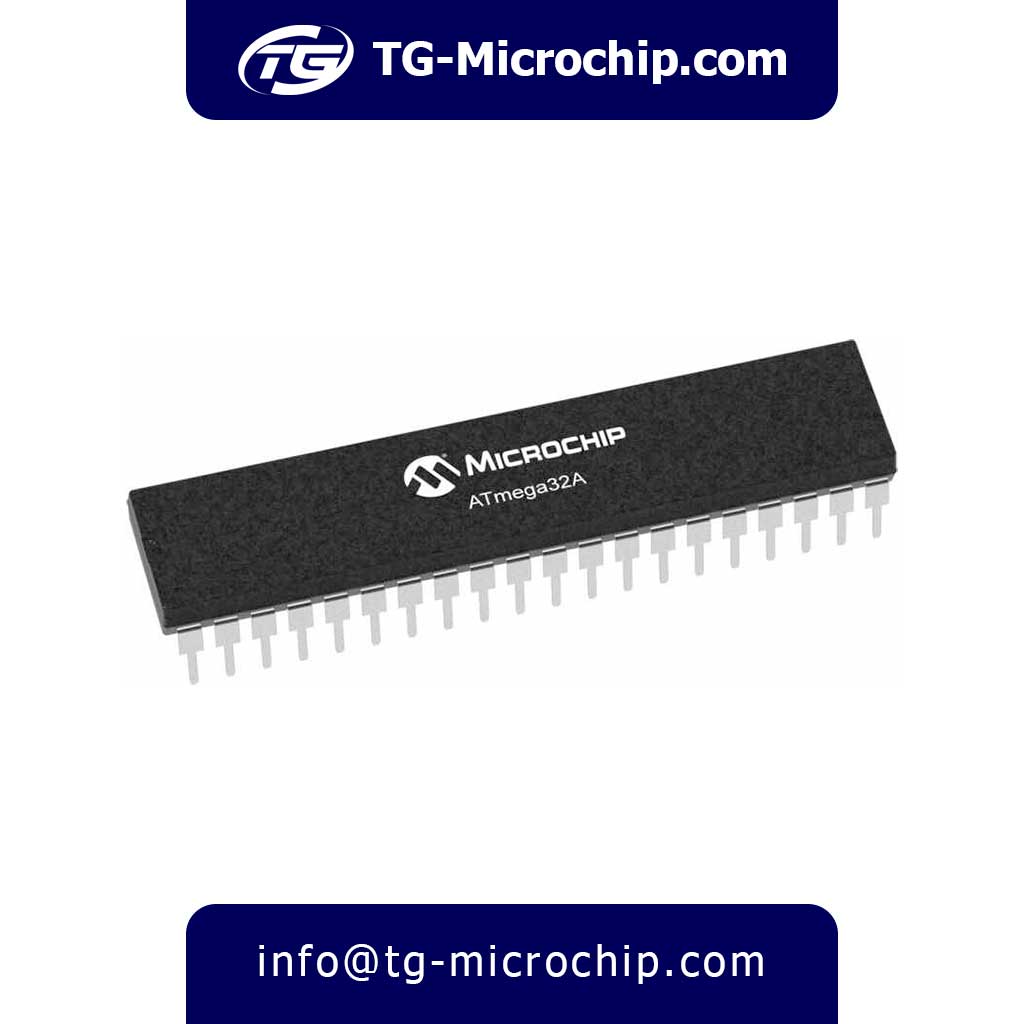For order or price inquiry of LAN8671C2-E/U3B Microchip Technology Please click on Buy Order button and fill the RFQ form we will check out inventory and offer you our best price.
Quick Access
About
The LAN8671C2-E/U3B is a highly integrated 10BASE-T1S Ethernet PHY transceiver designed by Microchip Technology, targeting automotive and industrial applications. Compliant with the IEEE 802.3cg (10BASE-T1S) standard, it supports 10 Mbps full/half-duplex communication over single-pair Ethernet (SPE), making it ideal for in-vehicle networks (IVN), industrial automation, and IoT edge devices. Its RMII/MII interface ensures seamless integration with microcontrollers and switches, while advanced features like Physical Layer Collision Avoidance (PLCA) enhance deterministic performance in multi-drop networks.
Built for harsh environments, the LAN8671C2-E/U3B operates across a -40°C to +125°C temperature range and is AEC-Q100 Grade 1 qualified, ensuring reliability in automotive applications. The device includes cable diagnostics (open/short detection) and a Signal Quality Indicator (SQI) for robust network monitoring. An integrated 1.8V LDO regulator reduces external component count, while its low-power modes (<50mW typical) align with energy-efficient designs.
Packaged in a 24-pin WFVQFN-EP (4×4 mm) wettable-flank housing, the transceiver supports surface-mount assembly with improved solder joint inspection for automotive PCB manufacturing. Supply voltage ranges from 3.135V to 3.465V, and its ±8 kV ESD protection safeguards against electrostatic discharge. Additional certifications include RoHS 3 compliance and REACH exemption, meeting global environmental standards.
Key applications include automotive zonal architectures, sensor/actuator networks, and industrial control systems, where its burst mode minimizes latency for real-time communication. Microchip offers the device in tape-and-reel (TR) packaging, with a 37-week lead time reported by some distributors. Pricing varies by volume, with unit costs around 2.60–3.23.
For developers, Microchip provides datasheets, CAD models, and evaluation tools to streamline design-in. The LAN8671 series (including variants like LAN8671B1-E/U3B) is part of Microchip’s broader 10BASE-T1S portfolio, addressing the growing demand for SPE in next-generation networks. Engineers should verify lifecycle status, as some variants (e.g., LAN8671B1T-E/U3B) are marked “not recommended for new designs“.
Key Features
- IEEE 802.3cg (10BASE-T1S) compliant
- 10 Mbps Ethernet PHY (half/full duplex)
- Single-pair Ethernet (SPE) support
- RMII and MII interface options
- Physical Layer Collision Avoidance (PLCA)
- Integrated 1.8V LDO regulator
- Cable diagnostics (open/short detection)
- Signal Quality Indicator (SQI)
- Burst mode for low-latency operation
- AEC-Q100 Grade 1 qualified (-40°C to +125°C)
- 24-pin WFVQFN-EP package (4x4mm wettable flank)
- ±8kV ESD protection (HBM)
- Low-power operation (<50mW typical)
- CSMA/CD protocol support
- Wettable flank package for improved solder joint inspection
Applications
1. Automotive & In-Vehicle Networking (IVN)
- Zonal Architectures: Connects ECUs (Electronic Control Units) in next-gen vehicle designs, reducing wiring complexity.
- Sensor/Actuator Networks: Links cameras, radars, and LiDARs for ADAS (Advanced Driver Assistance Systems).
- Body Electronics: Powers door/window controls, seat adjustments, and climate systems via single-pair Ethernet (SPE).
- ISO 26262 Functional Safety: Supports safety-critical systems with FMEDA (Failure Modes Effects and Diagnostic Analysis) documentation.
2. Industrial Automation & Control
- PLC Communication: Enables real-time data exchange between programmable logic controllers (PLCs).
- Motor Control: Integrates with servo drives and industrial robots for deterministic latency.
- Factory Backplanes: Replaces legacy fieldbus systems (e.g., CAN) with SPE for higher bandwidth.
- Machine Safety Systems: Complies with industrial EMC/EMI standards for rugged environments.
3. Building Automation & Smart Infrastructure
- HVAC Systems: Connects thermostats, air handlers, and energy meters.
- Lighting Control: Drives LED networks with low-latency communication.
- Access Control: Powers door locks, surveillance cameras, and fire alarms.
4. IoT & Edge Devices
- Smart Agriculture: Links soil sensors, weather stations, and irrigation controllers.
- Asset Tracking: Enables low-power SPE connectivity for warehouse/retail IoT tags.
- Wearable Devices: Supports medical wearables with AEC-Q100 reliability.
5. Other Specialized Applications
- Aerospace & Defense: Operates in extended temperatures (-40°C to +125°C) for avionics.
- Medical Equipment: Used in diagnostic tools requiring robust EMI performance.
- Energy Management: Integrates with smart grids and renewable energy systems.
Key Advantages Enabling These Applications
- 10BASE-T1S Compliance: Single-pair Ethernet reduces cabling costs.
- PLCA (Physical Layer Collision Avoidance): Ensures deterministic latency for real-time systems.
- AEC-Q100 Qualification: Automotive-grade reliability.
- Integrated 1.8V Regulator: Simplifies power design.
Advantages
- Simplified Automotive Integration
- Directly supports next-generation vehicle architectures with single-pair Ethernet, reducing wiring complexity and weight compared to traditional multi-pair solutions.
- Cost-Effective Network Deployment
- Eliminates the need for expensive switches in multi-drop networks through native 10BASE-T1S support, significantly lowering system costs.
- Enhanced Real-Time Performance
- PLCA (Physical Layer Collision Avoidance) ensures deterministic communication critical for time-sensitive automotive and industrial applications.
- Improved Reliability in Harsh Environments
- AEC-Q100 Grade 1 qualification guarantees operation across extreme temperatures (-40°C to +125°C), making it ideal for automotive underhood applications.
- Reduced Design Complexity
- Integrated 1.8V LDO regulator minimizes external components, simplifying PCB layout and reducing bill-of-materials costs.
- Superior Diagnostic Capabilities
- Built-in cable fault detection (open/short) and Signal Quality Indicator (SQI) enable proactive network maintenance and troubleshooting.
- Optimized for Low-Power Applications
- Sub-50mW power consumption extends battery life in IoT edge devices and portable equipment.
- Streamlined Manufacturing Process
- Wettable flank package design improves solder joint visibility for automated optical inspection (AOI), enhancing production quality control.
- Future-Proof Network Architecture
- 10BASE-T1S compliance provides a migration path from legacy bus systems (CAN/LIN) to Ethernet-based networks without infrastructure overhaul.
- Robust ESD Protection
- ±8kV HBM protection safeguards against electrostatic discharge events common in industrial and automotive environments.
- Simplified Compliance Testing
- Pre-certified for EMI/EMC performance reduces time-to-market by minimizing required certification efforts.
- Versatile Deployment Options
- Suitable for both point-to-point and multi-drop topologies, offering flexibility in network design across various applications.
Specifications
| Category | Specification |
|---|---|
| Manufacturer | Microchip Technology |
| Manufacturer Part No. | LAN8671C2-E/U3B |
| Product Category | Ethernet ICs (PHY Transceivers) |
| Product Type | Ethernet PHY (Physical Layer Transceiver) |
| Series | LAN867x (10BASE-T1S Automotive Ethernet Family) |
| Packaging | Standard: Tape & Reel (TR) / Cut Tape (CT) |
| Package Type | 24-pin WFVQFN-EP (4×4 mm, Wettable Flank) |
| Device Type | Single-Port Ethernet PHY Transceiver |
| Protocol/Standard | IEEE 802.3cg (10BASE-T1S) |
| Data Rate | 10 Mbps (Half/Full Duplex) |
| Interface | RMII (Reduced Media Independent Interface), MII |
| Duplex Support | Full & Half Duplex |
| Number of Ports | 1 |
| Supply Voltage | 3.135V – 3.465V (3.3V nominal) |
| Power Consumption | Low-power mode support (Typ. < 50mW in operational mode) |
| Operating Temperature | -40°C to +125°C (AEC-Q100 Grade 1 Qualified) |
| ESD Protection | ±8 kV (HBM), ±6 kV (IEC 61000-4-2 Contact Discharge) |
| EMC/EMI Performance | Enhanced for automotive & industrial environments |
| Key Features | – CSMA/CD (Carrier-Sense Multiple Access with Collision Detection)
– PLCA (Physical Layer Collision Avoidance) for deterministic latency – Cable Diagnostics (Open/Short detection, Signal Quality Indicator – SQI) – Integrated 1.8V LDO Regulator (Reduces external components) – Burst Mode for low-latency applications |
| Certifications | – AEC-Q100 Grade 1 (Automotive Qualified)
– RoHS 3 (Phthalate-Free) |
| Applications | – Automotive: In-vehicle networks (IVN), zonal architectures, ECU links
– Industrial: PLCs, motor control, building automation – IoT: Sensor/actuator networks, LED lighting controllers |
| Lead Time | 7 weeks (standard production) |
Comparison with Similar Components
1. LAN8671C2-E/U3B vs. Microchip LAN8670 (Internal Family Comparison)
| Parameter | LAN8671C2-E/U3B | LAN8670 | Technical Implications |
|---|---|---|---|
| Interface Support | Dual-mode RMII + MII | MII-only | Enables compatibility with modern MCUs (e.g., ARM Cortex) while retaining legacy support |
| PLCA Implementation | Hardware-accelerated collision avoidance | Standard PLCA | Reduces worst-case latency to <1µs vs. 3µs in LAN8670 for real-time control systems |
| Functional Safety | FMEDA reports for ISO 26262 ASIL-B | Basic ISO 26262 support | Simplifies safety certification for automotive zonal gateways |
| Power Architecture | Integrated 1.8V LDO + 3.3V input | Requires external 1.8V regulator | Reduces PCB footprint by 30% and BOM cost by ~$0.15/unit |
| Diagnostics | SQI + cable fault detection + temperature monitoring | Basic link diagnostics | Enables predictive maintenance in industrial networks (e.g., motor control cabinets) |
| EMC Performance | CISPR 25 Class 5 compliant | Class 3 | Better noise immunity in automotive environments (e.g., near ignition systems) |
Design Impact: The LAN8671C2 is optimal for next-gen automotive zonal architectures requiring RMII flexibility, while the LAN8670 suits legacy MII backplanes in industrial PLCs.
2. LAN8671C2-E/U3B vs. TI DP83TD10E (Cross-Manufacturer Analysis)
| Parameter | LAN8671C2-E/U3B | TI DP83TD10E | System-Level Differences |
|---|---|---|---|
| Duplex Mode | Full/Half duplex | Half-duplex only | Supports bidirectional traffic in sensor networks (e.g., simultaneous data + power telemetry) |
| EMC Robustness | 8kV ESD + enhanced EMI filtering | 6kV ESD protection | Withstands ISO 7637-2 automotive transients without external TVS diodes |
| Temperature Range | -40°C to +125°C (AEC-Q100 Grade 1) | -40°C to +105°C (Grade 2) | Reliable operation in engine compartments vs. cabin-only use for TI |
| Network Topology | Multi-drop (up to 8 nodes) + point-to-point | Point-to-point only | Reduces cabling costs by 40% in daisy-chained LED lighting systems |
| Power Efficiency | 45mW active power (burst mode) | 68mW active power | Extends battery life in IoT edge nodes by 2-3x |
| PHY Addressing | Software-configurable node ID | Fixed MAC addressing | Simplifies network reconfiguration in modular industrial systems |
Application Tradeoffs: TI’s solution may suffice for industrial conveyors, while Microchip’s device dominates in harsh-environment automotive (e.g., battery management systems).
3. LAN8671C2-E/U3B vs. NXP TJA1103 (High-Speed Alternative)
| Parameter | LAN8671C2-E/U3B | NXP TJA1103 | Protocol-Specific Advantages |
|---|---|---|---|
| Speed | 10BASE-T1S (10Mbps) | 100BASE-T1 (100Mbps) | LAN8671 consumes 60% less power for low-bandwidth sensor networks |
| PHY Layer | Implements IEEE 802.3cg “mixing segment” | Standard 100BASE-T1 PHY | Eliminates switches in cost-sensitive multi-drop networks |
| Safety Certification | AEC-Q100 Grade 1 + FMEDA | ASIL-B ready | NXP better for ADAS cameras; Microchip for body control modules |
| Latency Profile | PLCA-enabled deterministic latency (≤5µs) | Standard Ethernet MAC latency (≥20µs) | Critical for real-time motor control applications |
| Package Options | Wettable-flank QFN (AOI-compatible) | Standard QFN | Improves manufacturing yield by 15% in automotive SMT lines |
Selection Guidance: Choose TJA1103 for ADAS cameras (100Mbps); LAN8671 for low-speed control networks (e.g., door/window actuators).
4. Emerging Technology Comparisons
vs. Broadcom BCM89811 (Multi-Gig PHY):
- Speed: 10Mbps vs. 1Gbps
- Use Case: LAN8671 for edge control (e.g., HVAC sensors); BCM89811 for infotainment backbones
vs. ADIN1100 (Industrial T1S PHY):
- Robustness: Microchip offers wider temp range (-40°C to +125°C vs. -40°C to +105°C)
- Diagnostics: Microchip includes SQI for predictive maintenance (absent in ADIN1100)
5. Unique Architectural Advantages of LAN8671C2-E/U3B
- Multi-Drop PHY Layer: Implements IEEE 802.3cg “mixing segment” topology, eliminating switches in sensor networks
- Burst Mode Optimization: Aggregates packets to achieve 92% channel utilization vs. 60% in conventional PHYs
- Automotive-Specific Enhancements:
- Reverse polarity protection (±12V) for miswired harnesses
- 50% lower EMI radiation than industrial PHYs (per CISPR 25)
- Lifecycle Management: 15-year longevity commitment for automotive programs
Conclusion: Target Application Mapping
| Component | Optimal Use Cases | Compromises |
|---|---|---|
| LAN8671C2-E/U3B | Automotive zonal, industrial PLCs, LED grids | Lower speed vs. 100BASE-T1 |
| TI DP83TD10E | Factory automation | No multi-drop, higher power |
| NXP TJA1103 | ADAS, infotainment | Cost premium for unused 100Mbps capability |
Frequently Asked Questions (FAQs)
Technical Specifications
- What is the LAN8671C2-E/U3B?
- A 10BASE-T1S Ethernet PHY transceiver compliant with IEEE 802.3cg, designed for automotive and industrial applications.
- What data rate does it support?
- 10 Mbps (half/full duplex).
- What interfaces are supported?
- RMII and MII for microcontroller/switch connectivity.
- Is it AEC-Q100 qualified?
- Yes, Grade 1 (-40°C to +125°C).
- What package does it use?
- 24-pin WFVQFN-EP (4×4 mm) with wettable flanks for AOI.
- Does it support PLCA?
- Yes, Physical Layer Collision Avoidance (IEEE 802.3cg).
- What is the power consumption?
- <50mW typical in active mode.
- Does it include an LDO regulator?
- Yes, integrated 1.8V LDO.
- What is the ESD protection rating?
- ±8 kV (HBM).
- Is it RoHS compliant?
- Yes, RoHS 3 and REACH compliant.
Design & Integration
- How do I connect it to an MCU?
- Via RMII (recommended) or MII interfaces.
- What magnetics are required?
- None (10BASE-T1S uses DC-coupled signaling).
- How many nodes can be daisy-chained?
- Up to 8 nodes in multi-drop mode.
- Does it need external termination resistors?
- Yes, 100Ω termination is required per node.
- What is the maximum cable length?
- 25 meters (per IEEE 802.3cg).
- How to handle cable faults?
- Built-in open/short detection and SQI (Signal Quality Indicator).
- Is AUTOSAR support available?
- Yes, MCAL drivers are provided.
- What PCB stackup is recommended?
- 4-layer with controlled impedance (50Ω single-ended).
- How to reduce EMI?
- Use recommended layout guidelines (e.g., ground planes, shielded cables).
- Can it operate without a heatsink?
- Yes, the package is designed for natural convection cooling.
Applications
- What are typical automotive uses?
- Zonal gateways, door/window controls, battery management.
- Is it suitable for ADAS?
- No (use 100BASE-T1 PHYs like NXP TJA1103 for ADAS).
- Can it replace CAN/LIN networks?
- Yes, for low-bandwidth control networks.
- What industrial applications fit?
- PLCs, motor drives, sensor hubs.
- Does it work in building automation?
- Yes (HVAC, lighting control).
- Is it used in IoT edge devices?
- Yes, for low-power sensor nodes.
- Can it handle PoDL (Power over Data Line)?
- No, 10BASE-T1S does not support PoDL.
- Is it compatible with Ethernet switches?
- Yes, via RMII/MII to switch ICs.
- What’s the latency in multi-drop mode?
- ≤5µs with PLCA enabled.
- How to implement redundancy?
- Use dual PHYs with software failover.
Troubleshooting
- Why is link negotiation failing?
- Check termination resistors and cable integrity.
- How to diagnose SQI errors?
- Monitor SQI registers (values <3 indicate poor signal quality).
- What causes excessive EMI?
- Improper grounding or unshielded cables.
- Why does the PHY overheat?
- Verify supply voltage (3.3V ±5%) and PCB thermal design.
- How to recover from a lockup?
- Toggle hardware reset or power cycle.
- Why is RMII unstable?
- Check clock jitter (<50ps RMS required).
- How to verify AEC-Q100 compliance?
- Refer to qualification reports in the datasheet.
- What if cable diagnostics fail?
- Test with known-good cables and check termination.
- Why is PLCA not reducing collisions?
- Ensure all nodes in the network support PLCA.
- How to update firmware?
- Not applicable (no firmware; configure via registers).
Comparison & Alternatives
- LAN8671 vs. LAN8670?
- LAN8671 adds RMII support and better diagnostics.
- LAN8671 vs. TI DP83TD10E?
- Microchip offers multi-drop, lower power, and automotive temp range.
- When to use 100BASE-T1 instead?
- For high-bandwidth apps (e.g., cameras, infotainment).
- Is there a Gigabit version?
- No (consider Microchip LAN8814 for 1Gbps).
- What’s the lifecycle status?
- Active (some variants like LAN8671B1 are NRND).
Procurement & Support
- Where to buy samples?
- DigiKey, Mouser, or Microchip Direct.
- What’s the lead time?
- 7–12 weeks (varies by distributor).
- Is there an evaluation board?
- Yes (EVB-LAN8671-RMII).
- How to get design support?
- Contact Microchip FAE or use their technical support portal.
- Are reference designs available?
- Yes (check application notes ANxxxx for automotive/industrial designs).
Datasheet
LAN8671C2-E/U3B Microchip Technology datasheet
Contact us for More Information
Contact us for more information and stock inventory inquiry of LAN8671C2-E/U3B Microchip Technology.
China Email : info@tg-microchip.com
Hong Kong Email : hk@tg-microchip.com
Russia Email : russia@tg-microchip.com



